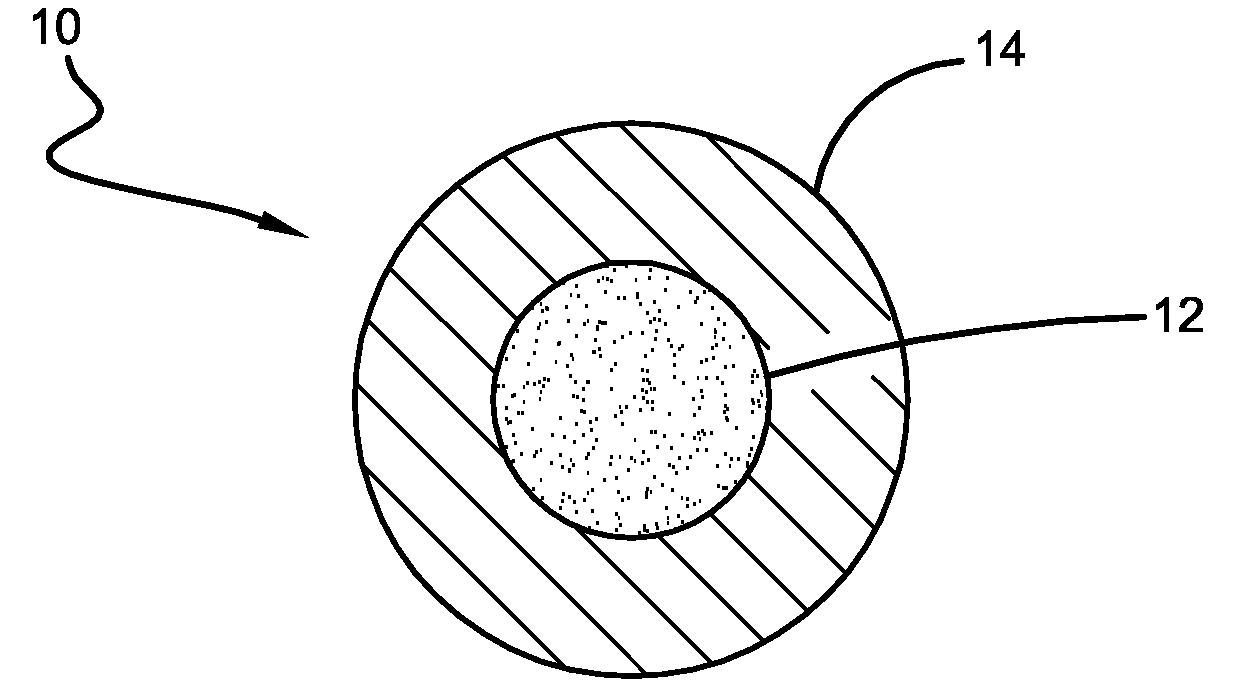Nutrient yielding bio-renewable controlled release fertilizer coatings
a technology of biorenewable controlled release and fertilizer coating, which is applied in the direction of biocide, application, animal corpse fertiliser, etc., can solve the problems of respiratory distress of people and animals in the local vicinity, the importance of animal waste disposal, and the impact of hydrophilicity
- Summary
- Abstract
- Description
- Claims
- Application Information
AI Technical Summary
Benefits of technology
Problems solved by technology
Method used
Image
Examples
example 1
[0078]Hog waste including excrements such as swine manure and urine and shedding such as hair are collectively stored in a pit beneath a hog confinement area, such waste further including the rinse water from cleaning the areas of confinement. This waste is subjected to a number of processing steps including screening, particle size reduction, solids content control, purification, pyrolysis, fine filtration and drying to provide a biomaterial as disclosed herein above. Pyrolysis occurs for a period of time 1.5 hours at a pressure maintained around 1600 psi and a temperature range maintained around 300° C. The resulting filtered and dried biomaterial has a final moisture content of less than 5 percent, a particle size via sieve analysis of +200 mesh. Elementally, the biomaterial is comprised principally of carbon and hydrogen along with lesser amounts of sulfur, nitrogen and phosphorous.
example 2
[0079]180 grams of biomaterial from Example 1, is heated to a temperature of 300 degrees Fahrenheit in a 600 mL insulated glass beaker. While vigorously stirring with an overhead paddle mixer at 100 rpm, 25 grams of hydrogenated tallow amine and 75 grams of ethylene vinyl acetate (Elvax 205W) are sequentially added. This composition represents a product that can be used as a sealant coating for polymer or sulfur coated fertilizers.
example 3
[0080]95 grams of biomaterial of Example 1 is heated to a temperature of 250 degrees Fahrenheit in a 250 mL glass beaker. While moderately stirring with an overhead paddle mixer 5 grams of hydrogenated tallow amine is added to the beaker and mixed for 15 minutes. This composition represents a product that can be used as a dust control coating agent for granular fertilizers.
PUM
| Property | Measurement | Unit |
|---|---|---|
| temperature | aaaaa | aaaaa |
| temperature | aaaaa | aaaaa |
| pressure | aaaaa | aaaaa |
Abstract
Description
Claims
Application Information
 Login to View More
Login to View More - R&D
- Intellectual Property
- Life Sciences
- Materials
- Tech Scout
- Unparalleled Data Quality
- Higher Quality Content
- 60% Fewer Hallucinations
Browse by: Latest US Patents, China's latest patents, Technical Efficacy Thesaurus, Application Domain, Technology Topic, Popular Technical Reports.
© 2025 PatSnap. All rights reserved.Legal|Privacy policy|Modern Slavery Act Transparency Statement|Sitemap|About US| Contact US: help@patsnap.com


